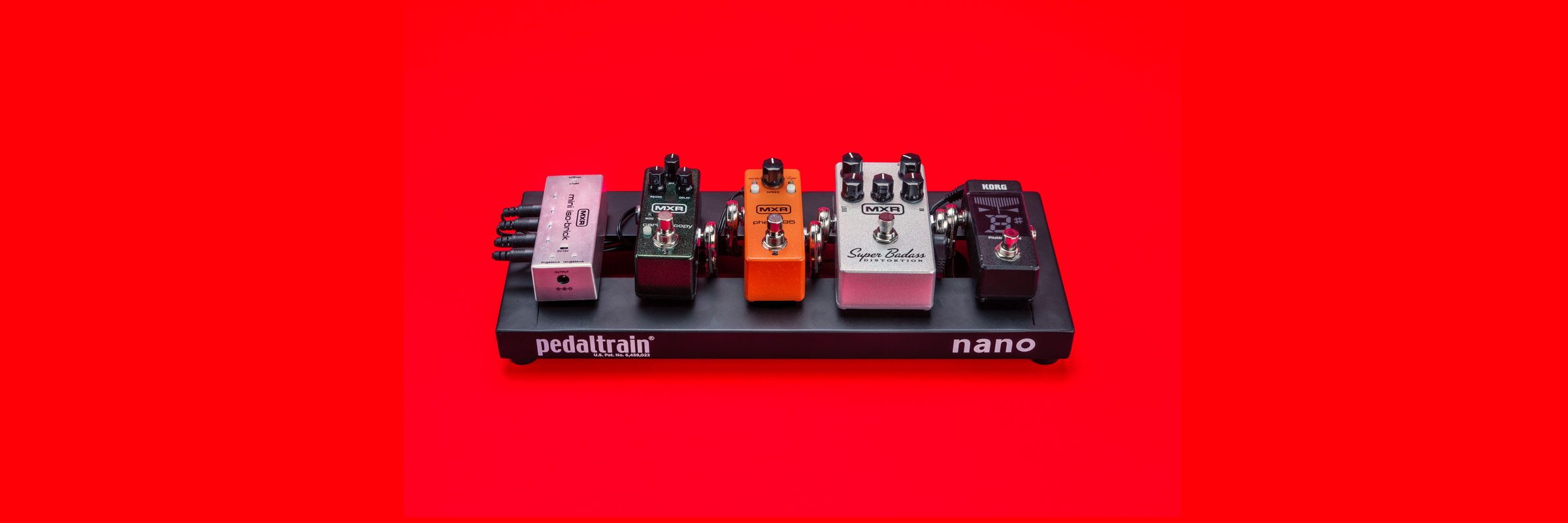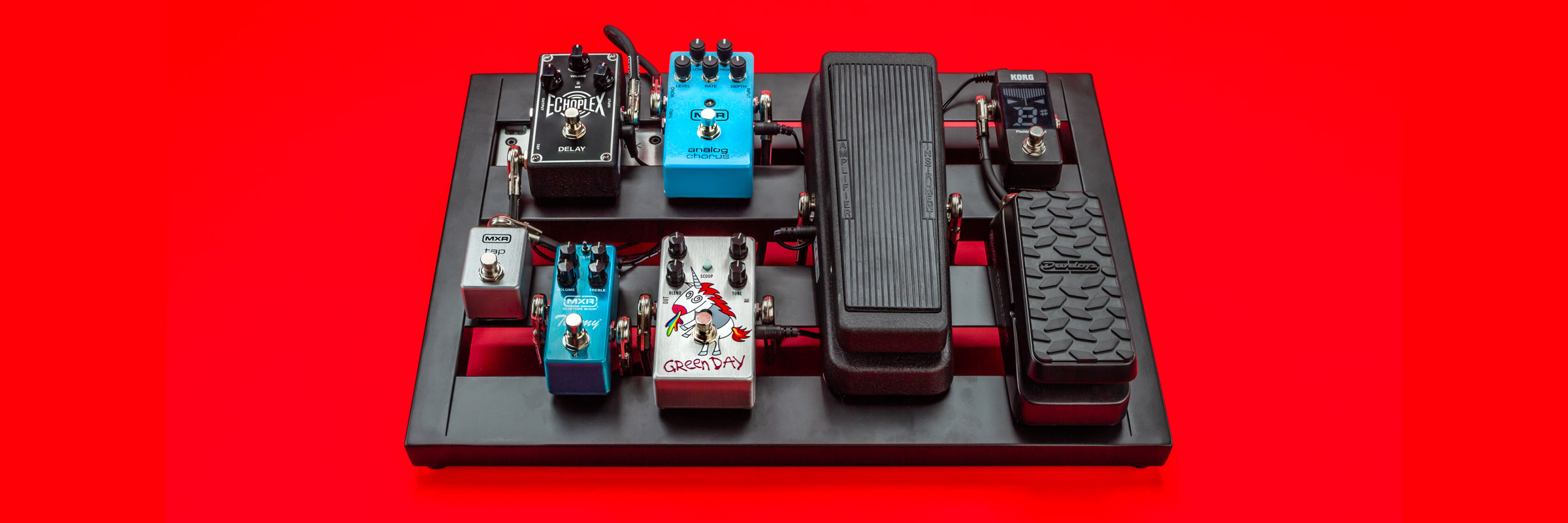Alright, busy players, this one’s for you. Say you’ve got a Friday night gig with your cover band, a Saturday night gig for your original work band, and bright and early Sunday morning, you’re handling six-string duties at church. If you’re playing that many shows over a three-day span, you probably won’t want to spend your downtime swapping pedals in and out of your pedal chain. We put together a group of pedals that’s comprehensive enough to be more or less multi-purpose.
Once again, we’re powering our board with the MXR Iso-Brick Power Supply for its high number of outputs and its plentiful power. The CAE Wah goes first, providing two different wah voices—one warm, the other bright and aggressive—along with built-in boost circuit and controls to tailor the sound of the pedal to the needs of your gig. In the gain department, we’re bringing plenty of options. First, the MXR Octavio® Fuzz is for when you need to break out some sizzling, synth-like saturation. Next, the MXR EVH® 5150® Overdrive provides hyperdriven amp stack tones with a three-band EQ, a boost, and a noise gate so that you can have it the way you like it. The MXR Timmy Overdrive is back again to cover the inevitable need for impeccable sounding pedal overdrive, while the MXR Booster gives you a ton of extra gain with a little tonal sweet sauce on it for good measure. We chose the Way Huge® Supa-Puss™ Analog Delay for your time-based needs—it has a ton of features for customizing the tone and behavior of your repeats, including an onboard tap tempo switch. The MXR Reverb avails you of six different reverb styles, and when combined with the Supa-Puss Delay will take you way out there on Saturday night so that you can bring back the angelic atmospherics for Sunday. The last pedal in this chain is the Volume (X)™ Pedal for when the singer complains about how loud you are, or in case you want to control the Supa-Puss Delay pedal’s delay time.
****
These are just starting points, and an infinite number of arrangements exist before, between, and after the three different examples in this article. As always, experiment with these suggestions to find the best solutions to your specific needs.








